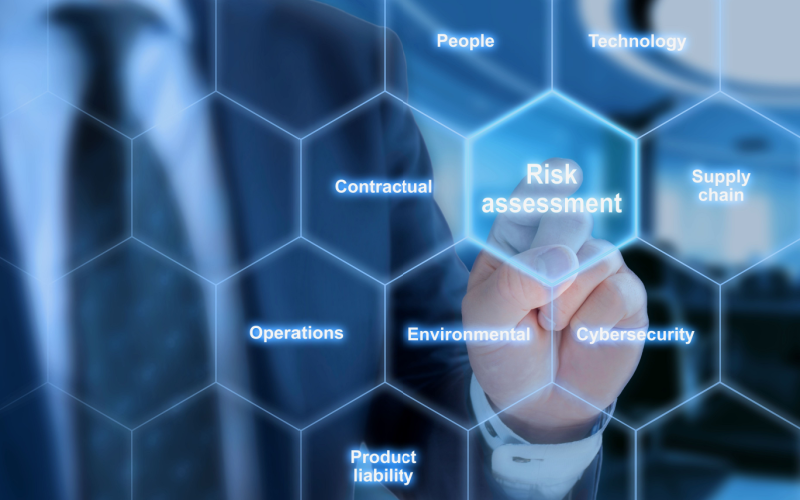Media outlets, as well as financial institutions like the New York Federal Reserve, are noting that supply chain pressures have eased significantly since the onset of the COVID-19 pandemic three years ago. This should have a positive impact on both general levels of inflation and the financial statements of many companies. That’s great news.
However, those of us who live and breathe supply chain may not be as optimistic. While conditions are doubtlessly more stable today, everywhere around us are reminders of supply chain vulnerabilities and risks.
The severe earthquakes that struck Turkey last month demonstrate the devastating power of natural disasters — which seem to be occurring more frequently as climate change accelerates. In just the first two months of 2023, there were 22 natural disasters worldwide. The recent train derailment in East Palestine, Ohio, brought the issue of rail safety to the forefront, and it was not an isolated incident. In fact, every year there are over 1,700 train derailments in the U.S. alone.
The Australian logistics market has been upended after the country’s leading cold chain operator declared insolvency in the face of skyrocketing costs. From tomatoes to semiconductors, product shortages persist. The increased cost of labor and freight, along with some capacity issues in both areas, continue to create risk exposure.
While conditions have improved dramatically since 2020, the unfortunate truth is this: Supply chain risk is not going anywhere. End-to-end global supply chains, spanning thousands of miles and involving dozens of participants, are always going to be fraught with complexity and risk.
The key to supply chain stability and profitability? Understanding exactly where those risks lie and recognizing threats and disruptions at the earliest possible opportunity. Companies able to identify, and minimize, adverse conditions along the supply chain have a significant competitive advantage over enterprises that lack this capability. Given the length of the typical supply chain, as well as the number of physical locations and participants involved, this might sound impossible. But near real-time supply chain risk detection and management are now within the reach of every organization.
The Power of Partnership: Two Leaders Come Together
Today, Blue Yonder’s advanced Luminate Control Tower solution includes an industry-leading capability to monitor, detect and mitigate supply chain risks, from the first mile to the last, by gathering and analyzing enormous volumes of real-time data. Blue Yonder has partnered with Resilinc, the world’s leading supply chain risk monitoring, mapping and resiliency solution provider, to leverage leading-edge data science – and add an “early warning system” to Luminate Control Tower’s existing supply-chain monitoring functionality.
Blue Yonder’s Luminate Control Tower customers have the ability to partner with Resilinc to access EventWatchAI — a 24-7, real-time alert system that scans the supply chain for over 400 disruptive event and sub-event types that have the potential to impact an organization’s supply chain ecosystem.
Potential risks monitored and flagged by EventWatchAI include port closures, production shutdowns, labor shortages, cost increases, extreme weather events, new government regulations and tariffs, environmental violations, and even mergers/acquisitions. This early-warning system scans and analyzes nearly 5 billion data feeds across 104 million sources in over 100 languages, including daily news, government regulatory reports, wire services, and social media.
EventWatchAI utilizes proprietary artificial intelligence (AI), as well as a patented risk-scoring system, to not only flag potential risks but also assign a quantitative score so planners know how serious each threat is. The system looks across all supplier tiers and scans relevant data from end to end.
The Value of a Proactive, Not Reactive, Response
Once a potential threat is identified, supply chain and logistics planners can capitalize on virtual “situation rooms” to conduct more in-depth analysis, as well as define and test various scenarios for resolution. Resolutions might include using an alternative supplier, shifting production to another facility or defining a different shipping route. Key supply chain stakeholders can collaborate to predict the likely impact of any response before it’s implemented, choosing the best plan of action for the entire network.
Together, Blue Yonder and Resilinc offer organizations a unique ability to increase end-to-end, real-time supply chain visibility, setting the stage for faster, more accurate and more informed decision-making. Companies and their trading partners can intelligently balance cost and service outcomes in advance of a supply chain disruption, instead of making panicked, on-the-fly decisions after the fact.
The two companies have created a flexible, scalable risk-management offering that’s technology-agnostic. The combined solution interprets structured and unstructured data in order to provide connectivity and visibility across the entire digital ecosystem, including all supply chain functions and trading partners. Once the right course of action is identified, it’s fast and seamless to execute that decision across the end-to-end global supply chain.
Risk Is Unavoidable — But You Can Learn to Master It
By working together, Resilinc and Blue Yonder are providing customers with the most powerful supply chain risk monitoring and mitigation capability on the market today. Luminate Control Tower is a groundbreaking digital solution that’s already helping companies in every industry to monitor conditions and maximize results along the global supply chain. When customers add Resilinc’s EventWatchAI — the gold standard in supply chain mapping, monitoring, risk and resiliency — Luminate Control Tower increases its ability to sense, capture and act on supply chain threats and opportunities.
The worldwide business landscape may be stabilizing, but every supply chain activity, from holding inventory to making delivery commitments, is still fraught with risk. The organizations that succeed in the future will be those that embrace and master those inherent dangers, turning early risk identification and mitigation into a meaningful edge over less-prepared competitors.

